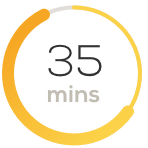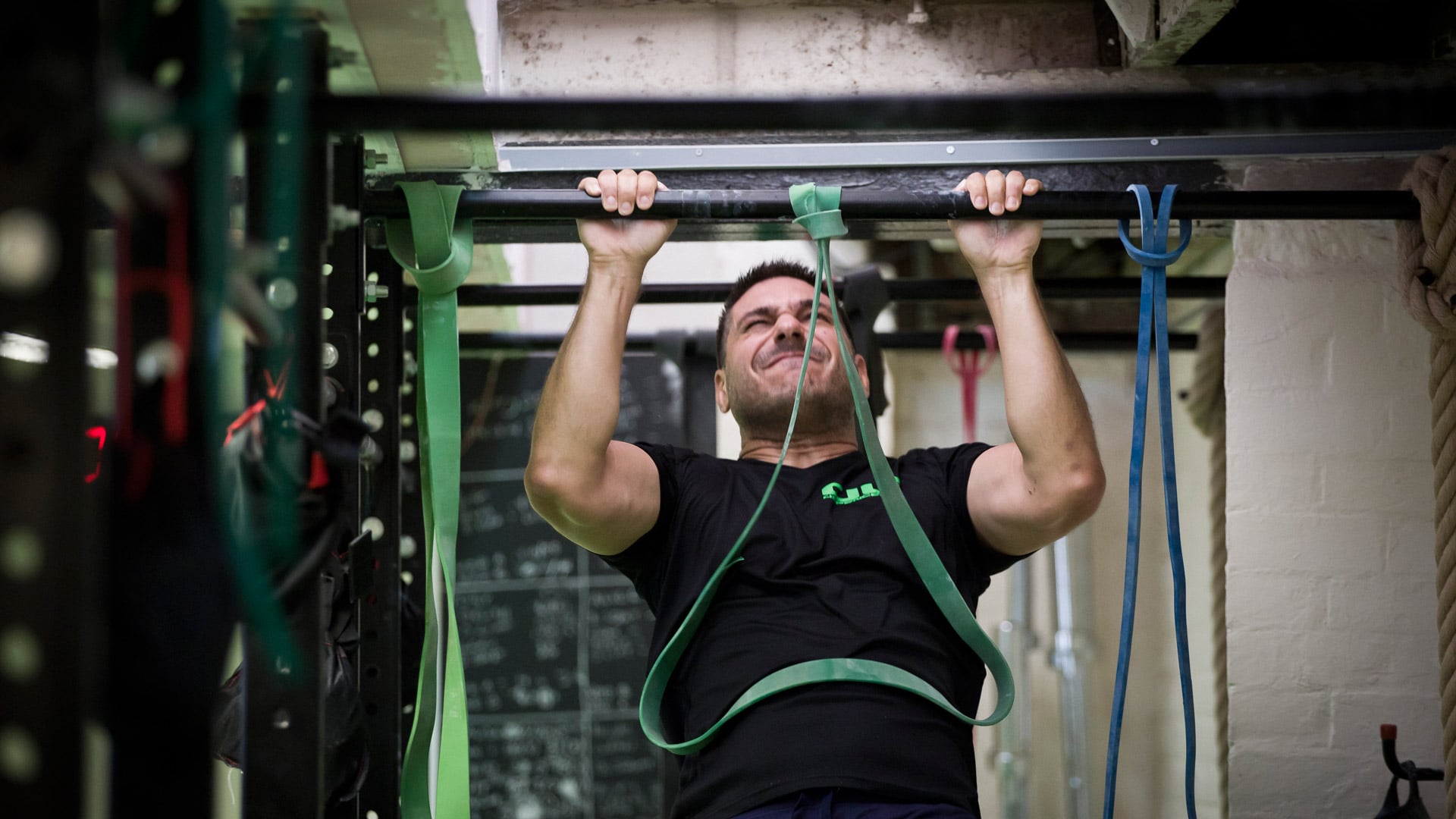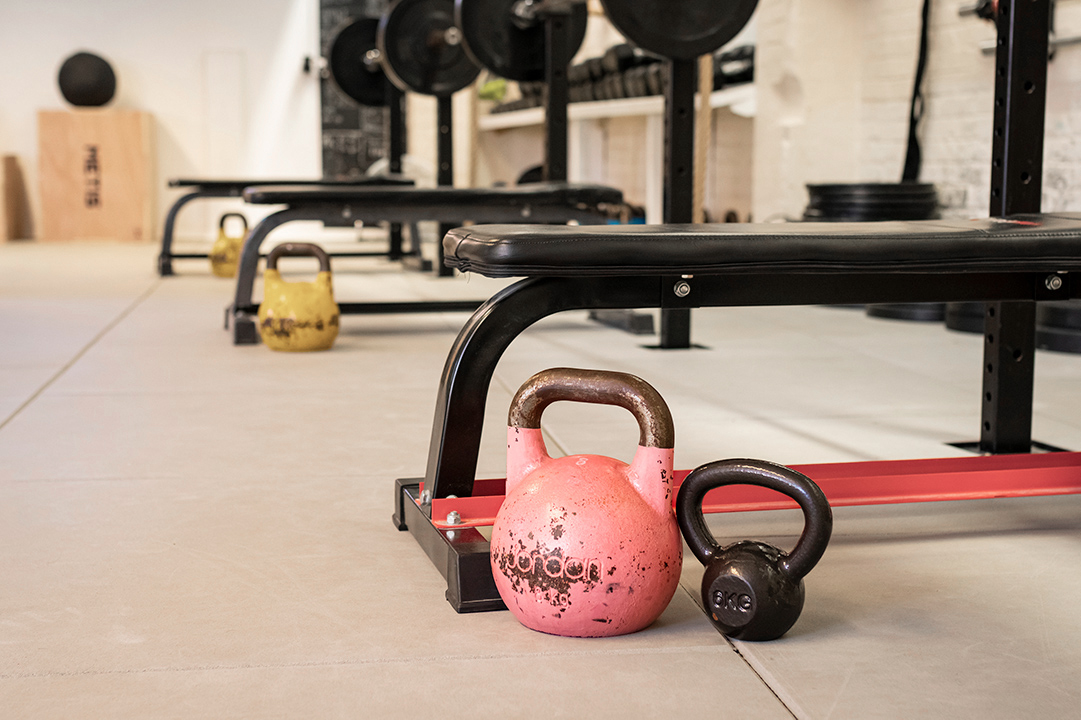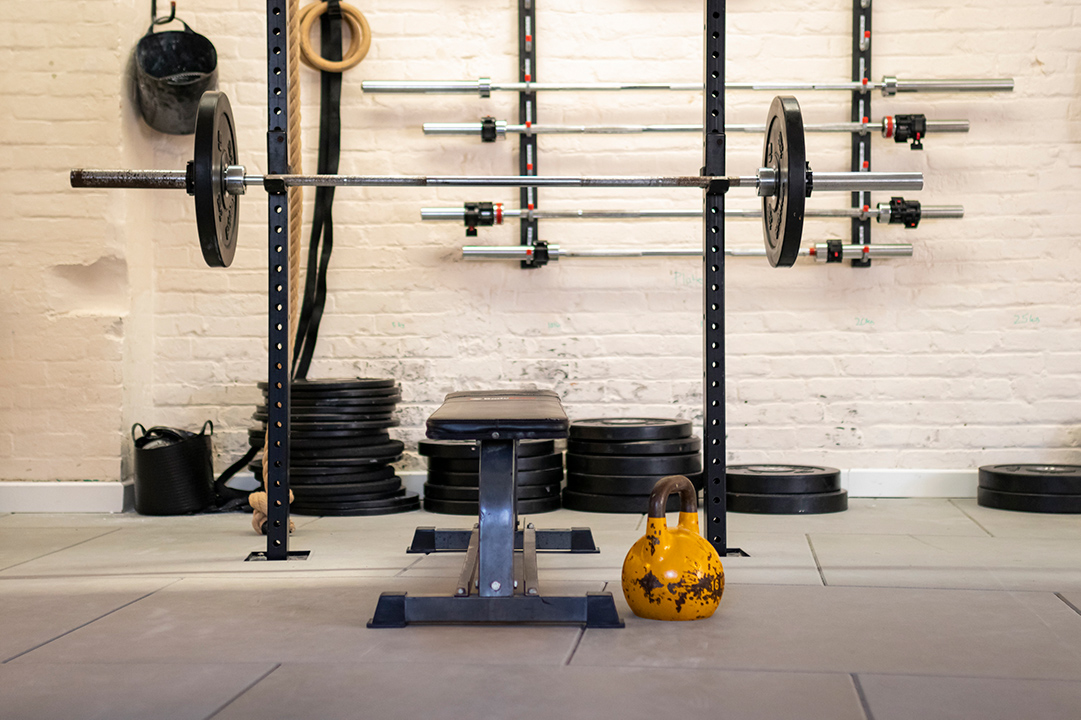Strength Training Brighton
Intro Offer: First Class £10Strength Training
Build your strength safely and effectively
Our classes are designed to give you a whole body workout using exercises for pushing, pulling, rotating and leg strength. Our training plan changes every 6 weeks to keep your body challenged and your brain engaged. We use a blend of the latest scientific research and tried and tested approaches to help you build a body that feels great to live in.
Class sizes are small enabling us to adapt for individual needs to ensure everyone gets their own workout according to their level, experience and injuries.
What to expect in a strength class

Pre-session warm-up
We encourage you to arrive up to 15 mins early and provide foam rollers and massage balls and teach you how to do your own soft tissue and myofascial release work & use this time to get in tune with how your body feels on the day.

Dynamic mobility warm up
Our dynamic mobility based warm up will improve range of movement, promote blood flow, engage your brain and mobilise your joints ready for action. Then we will introduce drills and exercises to help prepare, learn technique and activate your body for the specific exercises in the main strength segment.

Main Strength Segment
The main strength segment of the workout will focus on between 2 and 4 compound exercises with the aim of getting stronger in these movements, we encourage you to track your progress week on week. Every 6 weeks we design a bespoke strength training program that we work to. Each 6 week program will focus on a set of exercises and use a different training system such as supersets, trisets, tempo sets and upper body / lower body splits, PLUS we vary rep ranges and training volumes to target different elements of strength such as maximal strength, or strength endurance.

Supplementary exercises or Conditioning
Depending on the aims of the current 6 week program, the second half of the session might focus on supplementary exercises or conditioning. Supplementary exercises are often used to target more specific muscle groups or areas of the body that need to be strengthened to help facilitate the bigger compound movements such as squats, deadlifts, pushing and pulling. These generally aren’t the flashiest exercises and they are usually the first ones people skip in their own workouts, but they are super beneficial and help to build a solid foundation to safely build real strength from, improving posture, mobility and reducing risk of injury at the same time.
Conditioning is designed to improve your sub-maximal strength endurance and overall fitness. In a well designed conditioning workout, your heart-rate will be consistent higher than in strength training, it will involve higher repetitions at lower weights, with less rest and incorporate faster movements such as running, rowing and skiing on a Concept 2 SkiErg.

Core Work
The last 5 minutes of a strength class at Energy for Life will focus on core strengthening. You can think of your core as your torso and the joints that attach your limbs to your torso. With this definition in mind, our core work is about far more than endless ab exercises. Our aim is to improve strength and function of all the muscles around your torso, including hips and shoulder joints. We use a mixture of isometric and dynamic exercises to improve postural stability, and dynamic strength through a full range of motion. These are rarely the exercises you see people boasting about on their socials, but we know first hand how important they are, acting like an insurance policy against risk of injury and back pain, that means more consistent, higher quality training and faster gains over the long term.

New to Weight Lifting & Resistance Training?
For a lot of people, the thought of weight lifting brings up images of pumped up, intimidating bodybuilders hogging all the weights and taking up all the space at the gym, whilst flexing their biceps in the mirror.
Well we don’t have any mirrors, no one’s goal is to look like they’ve been inflated by a pump and everyone is super friendly, supportive and inclusive. It’s a real shame that so many people are put off using the weights area in a gym because the benefits of strength training are so huge, we want everyone to experience them. So don’t worry if you’ve never tried it before, our classes are designed for all strength levels and all levels of experience from beginners to advanced.
One of the things that we love so much about strength training is that it’s all relative. A beginner can learn bodyweight squats alongside a seasoned athlete using a heavy barbell and both are getting the same benefits. As the beginner gets stronger, the weights they use get heavier until they too are as strong as the seasoned athlete. We pride ourselves on our friendly, inclusive atmosphere in our classes, there’s no ego, just enthusiasm. So, if you’ve always wanted to get into strength training, come and give it a go!

Attending Your First Class
If you haven’t done any resistance training recently, we encourage you to start with light weights or body-weight versions of the exercises in your first class. Don’t get carried away looking at the weights other people there might be using, and lift too heavy. It’s important to learn proper technique first and allow your body time to adapt slowly to lifting weights to avoid suffering badly from DOMs (delayed on-set muscle soreness) after your session.
Do I need to do anything in preparation for my first Strength class?
No, there is nothing specific you need to do before your first strength class. If you are super keen to build some basic strength before you come to a class, you could start with some basic bodyweight exercises at home for 2-3 sessions over a week or so before your class.
Exercises such as push-ups, squats and lunges will help prepare your muscles for weighted exercises. Check out our free online workouts on our blog or subscribe to our online recorded class library if you want to do some follow along strength and fitness workouts at home before starting at the studio.

What do I need to start Strength Training?
We recommend bringing your own water to stay hydrated and to wear comfortable clothing that allows you to move freely. Some people find holding weights and hanging from pull up bars quite tough on their hands to begin with, so sometimes it can be useful to wear gym gloves.
Should I Eat Before My Class?
This really depends on the time of your class and what you are used to. If you are coming to an early morning class, that is before the usual time you would eat breakfast, then you should be fine to train without eating beforehand. Save it for a healthy post-workout meal.
If the class is soon after when you would normally eat, try to limit yourself to something small and easily digestible. Or plan around your workout so you have a main meal at least 2 hours before the class.
Can I do Strength Training at home?
For sure you can! Even if you don’t have any weights, bodyweight exercises are a great way to build a base level of strength and fitness. There are often things around the house you can incorporate into your workouts to make them more challenging, such as chairs, tins and one of our favourites – a backpack full of books to make a weight.
If you feel that you have difficulty getting to strength classes or you would like to “hit the ground running” having done some home workouts first, then we have a wealth of bodyweight strength and fitness classes accessible via our Online Classes section of the website.
What is Strength Training?
Strength training is a key component of overall health and fitness for everyone. It can help you preserve and enhance your muscle mass at any age. You don’t need to spend hours a day lifting weights to benefit from strength training. You can see significant improvement in your strength with just two or three 20- or 30-minute sessions per week.
Strength training works to make your body stronger by adapting it to increasing levels of resistance. Resistance can come from lifting loads (weights and your Bodyweight) against gravity, as well as from springs, magnets and resistance bands. Improvements in strength can come from enhancing your ability to produce force more effectively as well as by increasing muscle mass as part of supercompensation.
Our Head of Strength, Tom Powell, has over 15 years teaching experience in the industry and designs our strength training programs to ensure we are constantly evolving our methods and knowledge, so that your workouts are always fun, challenging and pushing you to get the results you deserve. See Tom’s full biography here.
What are the Benefits of Strength Training?
If, like us, you are over the age of 30, then it really is a case of use it or lose it when it comes to maintaining your muscle mass. Due to declining levels of naturally occurring growth hormones after the age of 30, you’d lose around 1% of muscle mass per year. So what, you aren’t interested in big muscles anyway you might say? Well it’s about way more than just muscle size, the volume of your muscles contributes to your metabolism, so the more lean muscle mass you have, the more calories you burn, more on this below. More muscle also means better joint stability which reduces the risk of injury.
Weight bearing exercise has been shown to increase bone density, which is another thing that can decline with age. So strength training can prevent low bone density when done regularly over long periods of time, in partnership with a healthy nutritious diet. Higher bone density means they are stronger, less brittle and less likely to break if you fall. Hip fractures in the elderley is a significant risk factor of mortality in people over 65.
As mentioned above, lean muscle mass plays an important role in a healthy metabolism. That’s because lean muscle is metabolically more active than fat tissue. The higher your body ratio of muscle to fat, the more calories you will burn at rest. The more calories you burn at rest, the easier it is to stay in energy balance or mild deficit to maintain a healthy overall weight and body composition.
This one sounds kind of obvious, but the sometimes subtle benefits of being stronger than you were previously sometimes go unnoticed. As you get stronger, day to day things become easier and often more enjoyable like chasing the kids, carrying the shopping or walking up a set of stairs. When we enjoy things more, we tend to naturally choose to do them more, so it becomes a positive feedback loop – get stronger, find things that were hard are now much easier, naturally opt to do more of them, be more active and get stronger.
Have you ever experienced that happy, fuzzy, slightly euphoric feeling after a workout or playing sport or exercise? We sure have and it’s well documented now that exercise causes the brain to release endorphins and other feel good chemicals that help boost our mood and regulate stress. Strength training has the same effect, if you’ve had a stressful day at work, a strength workout can be a brilliant way to let go of it all and relax. Strength training also allows us to be more aware of our bodies, creating a better connection between our mind and bodies has huge mental health benefits in an exciting new area of research known as Interoceptive Awareness – sensing the physiological state of our bodies, such as our heart rate, our breathing patterns and energy levels.

Contact us
(+44) 7555 058 983
tom@energyforlifefitness.com